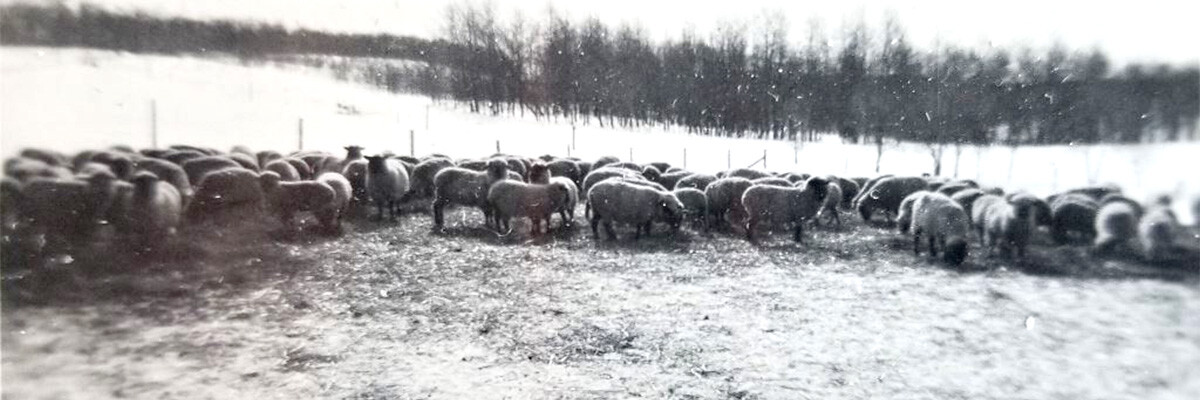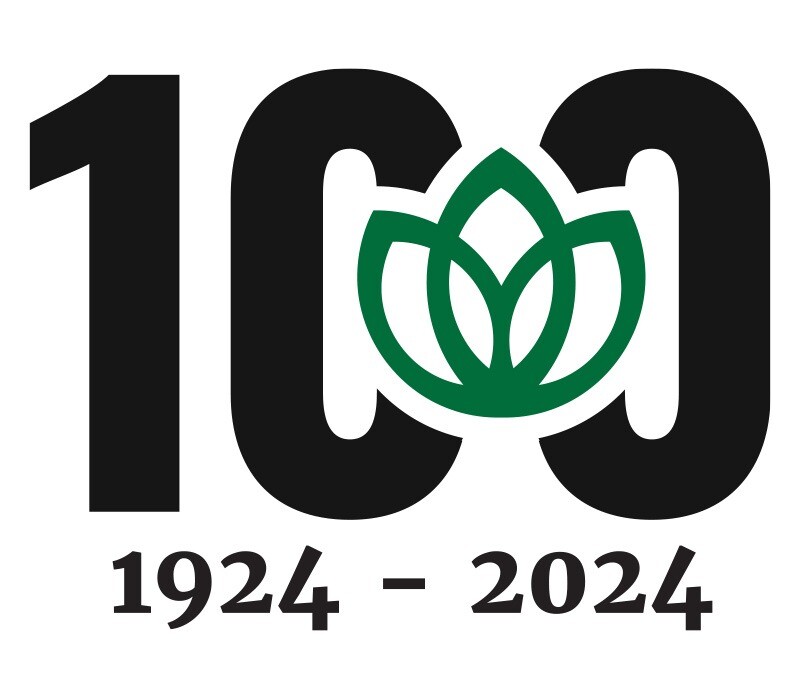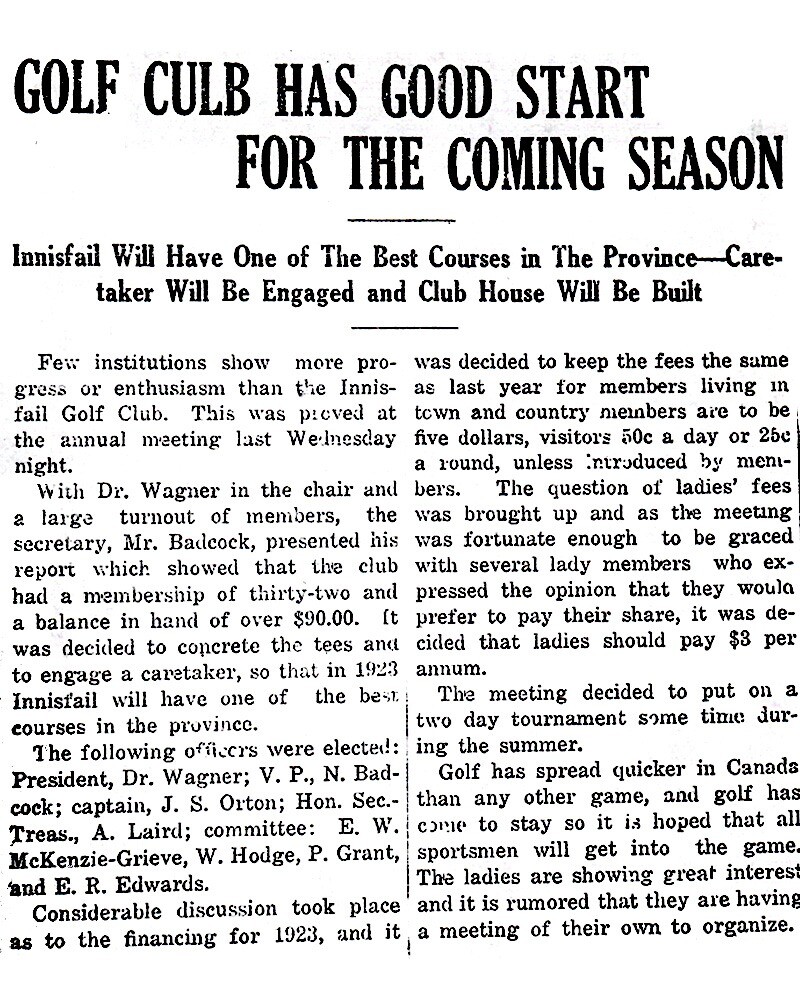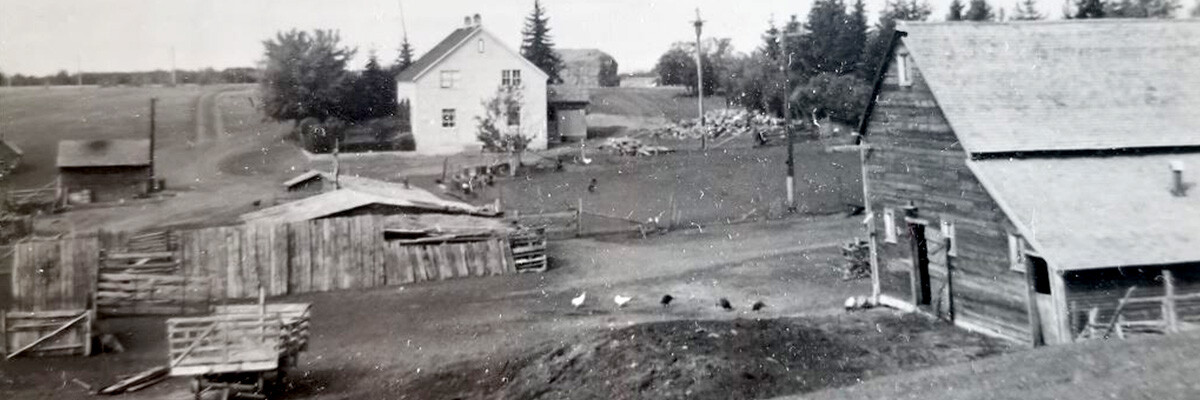If You Build it…. And Have Sheep!
Compiled by Dianne Finstad
It takes imagination and creativity to envision a nine-hole golf course on a scenic, sandy hillside. That’s exactly what Hank Wagner and his cohorts Bye, Badcock, Orton, Laird, McKenzie-Grieve, Hodge, Grant and Edwards did. They were the first officers of the early days of the Innisfail Golf Club in the 1920’s.
A 1922 newspaper report describes why the location chosen was such a good fit:
“We are fortunate in having so close to town a stretch of land where on the broad stretches of semi-soft turf surrounded and interjected with gently rolling hills and knolls and other natural hazards are most conducive to playing of good golf; and where the natural beauty of the landscape, with its many groves of trees and foliage, is an enticing allurement to spend a few hours in the great out-of-doors.”
The late Dick Percy, a longtime IGC member, lamented many of the original planning papers for the course were lost or never recorded. But he does note there was not a lot of clearing for the original holes. The forefathers chose open areas for fairways and built sand greens. Percy added “there is an abundance of sand, as we all know!”
A good neighbour to the course, Ian Stuart provides some valuable insights into the course history. What he heard was the ‘designers’ intentions were to duplicate the origins of golf on the sandy coastal hills of Scotland, on a type of terrain known as links or linksland, typically used as sheep pastures. The golf story goes that the bunkers at St. Andrews — Scotland’s first golf course, established in 1552 — were blown out areas from sheep huddling together against the North Atlantic wind.
“In our local case, sheep and other livestock huddle together more for summer shade where trees are sparse, but the resulting loss of surface vegetation and wind action has the same result of creating “sand traps”, particularly where the soil is sandy, as on our golf course,” adds Stuart.
After arriving from Scotland, Stuart’s own grandfather, Robert B or ‘Bob’, married Marion Hodge, daughter of the owners of Hazelwood Farm, which bordered the golf course. They eventually took over the farm from the family.
“The house they lived in initially was located on the hill above Aspen 3. Within a few years they also obtained (an adjoining quarter) SW-32-35-28 4 and moved to the farmstead where I grew up, next to Aspen 1 green,” says Stuart.
“Following the sheep pasture origins of golf, Robert B was encouraged to pasture his sheep on the Innisfail course in ever increasing numbers to keep the grass down.”
There were anywhere from 200-500 head of sheep, but Stuart claims they didn’t really keep the fairway grass trimmed down, since they were rather lazy and overgrazed the near fairways and neglected the far ones! However, the sheep were useful in keeping the grass down in the trees.
As a teen, Ian Stuart’s father Robert A was hired to mow the long fairway grass of the golf course. Using the single horse-drawn mower that now graces the practice putting green, and horses from Hazelwood farm (changing horsepower at noon), it took him a week to complete the job.
“For this, he received five dollars, which his father Robert B insisted he spend on clothing rather than the bicycle he desperately wanted. My siblings and I heard this story many times to remind us of how much better off we were than he was at our age,” chuckles Ian.
The single horse mower was replaced by a three-gang reel mower, which was pulled originally by a Model T, then a small grey Fordson tractor.

Sheep continued to graze the IGC hillsides for many years. In fact, when Robert A Stuart joined the Air Force in 1941, it fell to his sister Doris to be the course sheep herder for a time. Ian recalls his aunt wasn’t happy about that job. It looks like sheep were still being utilized until the mid-1950s. An additional tournament prep job as late as 1963 seemed to be raking the third fairway, mostly likely to clean up their ‘deposits’. Some members with a wry sense of humour took it upon themselves to make up some hats for the renowned Labor Day Classic tournament, renaming it the Sheep S**t Tournament! Wonder if there’s any of those collector hats around someone attic?
So it’s only fitting then, these days, to catch a glimpse of sheep grazing not far away from the course, under the solar panels lining the Aspen 2 fairway!
While members have always taken a personal stake in keeping the course in good condition, even the early leaders recognized the need for someone to have the course as a primary responsibility. Newspaper reports from the day show a Mr. Lundy was the first ‘groundsman’ for the course. Dick Percy’s memories include one of the early caretakers being a Mr. Bassett, a gentleman who’d arrived from England to make Innisfail his home. He was followed by a regular stream of people in the position, until the early 1930’s, when Dick Percy recalls Percy Hill took on the job.
“He was a lover of the game, and took a special interest in how the course should be kept up,” recalled Percy. “A great deal of credit should be given for his contribution. The greens were treated with an oil base from used oil, and large mats provided to smooth them out.”
Another longtime member, Joe Beardsworth, recalls the Innisfail Golf Course was known as ‘The Sportiest Nine Hole Course in Alberta’.
He also notes tee boxes at the time were wood framed structures with laminated rubber matting to accommodate tees. There were a few sand traps and no water hazards. Beardsworth says there were no tee times; players showed up and placed a ball in the starting tube. When your ball reached the bottom of the tube it was your turn. Green fees were $1.00 for nine holes and $1.50 for 18 holes. Green fees players put their money in an envelope which was deposited in a box in the clubhouse.
Keeping the course in great shape and working hard to improve it for the growing clientele has kept the Innisfail Golf Club on the leading edge of providing a great golf experience for a century, which is what we celebrate in 2024!


